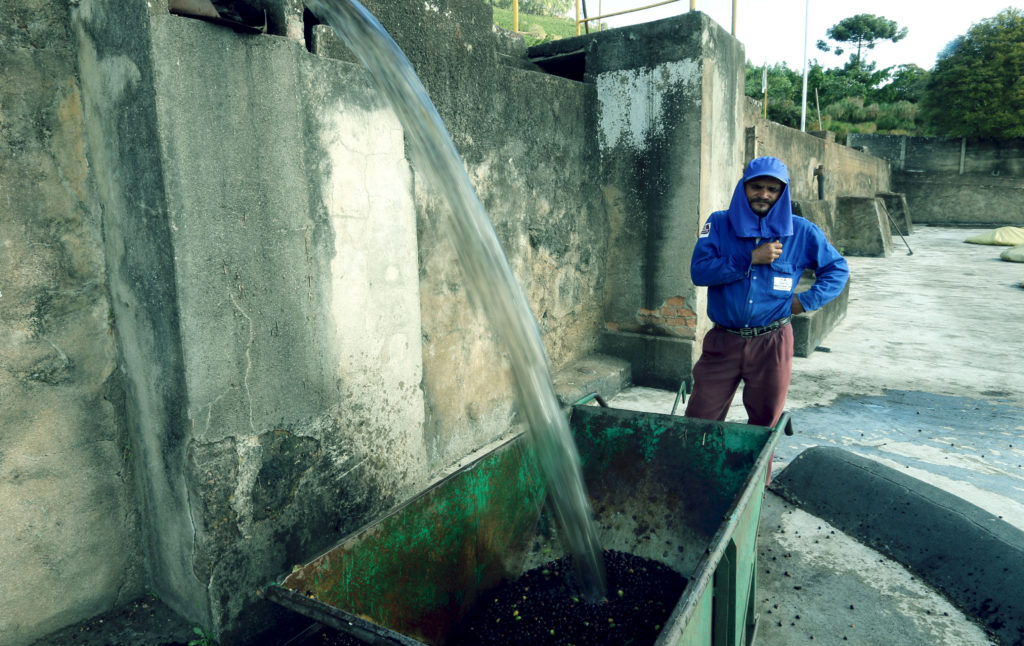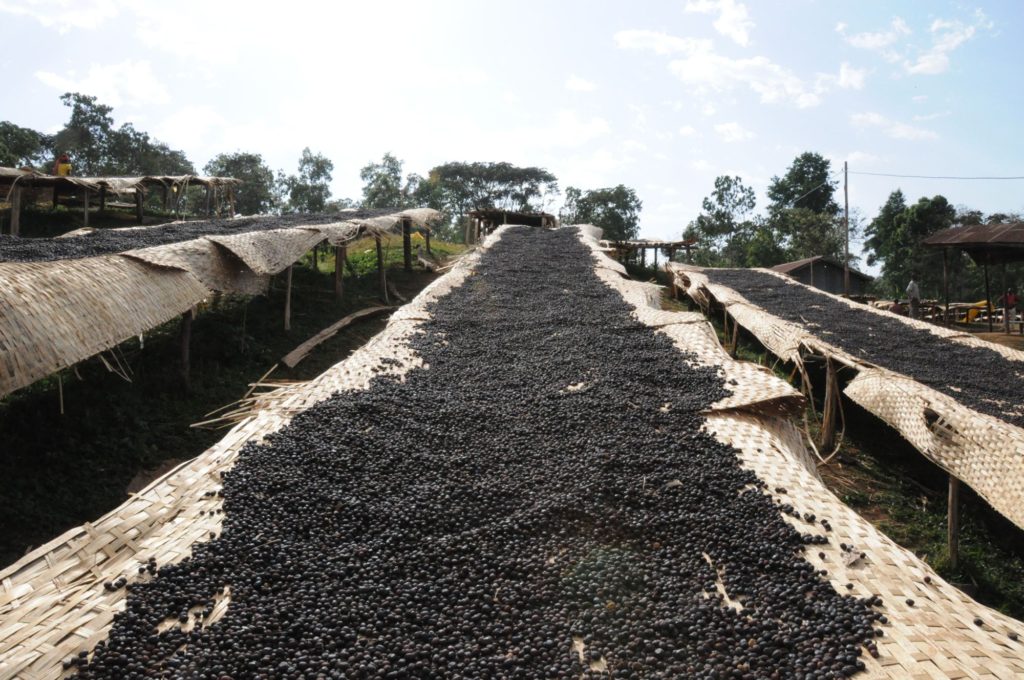Perhaps the least talked about – and even appreciated – step in coffee’s journey from seed to cup is the method in which the coffee is processed before it is exported, roasted, and enjoyed. The processing method used at origin is central to the identity of any coffee – imparting unique characteristics that are crucial to the way we experience our brew. When thinking about coffees in terms of general flavor, the processing method is just as important as the origin from which the coffee is grown.
You may be wondering why, then, the processing method is typically not even listed on bags of coffee, much less marketed on the same level as origin. While farmers recognize the economic implications of different processing methods, and roasters appreciate the flavor qualities imparted on the coffee (often guiding purchase and roast decisions), generally speaking, our industry has done very little to educate consumers on processing methods and communicate its importance in terms of body, acidity, and flavor in your final cup of coffee.
We like to help our customers go from being coffee drinkers to coffee lovers, and that requires a little extra know-how. We feel that it is our job to arm you with as much knowledge as possible in order to not only help determine your preferences and guide your purchase decisions, but also to increase your appreciation for coffee and overall satisfaction with every cup. In order to do that, we thought it would be a good idea to give a basic guide to each processing method and what they mean in terms of what you experience in your brew.
Processing Methods

We thought this image might be a helpful reference when discussing coffee processing methods. (Credit: Westrock Coffee)
When coffee cherries are picked off the tree, the inherent quality of the bean is at its peak. The farmer’s choice in processing methods is an extremely important one that enables the inherent qualities in the coffee bean to shine and to showcase the coffee’s best attributes. While many farmers recognize this and determine the processing method in order to coax out new and interesting flavors and experiences in coffee, there are many farmers throughout the world who are unaware of processing’s influence on the cup. These farmers, instead, process coffees differently because of legacy and tradition, or more simply, based on what resources are available and most economic.
There are two MAJOR categories of coffee processing recognized by the coffee industry as a whole: fully washed/wet and natural/dried. There are also two other processing methods which are variations of both the fully washed and the natural methods – combining aspects of each method. These categories include pulped natural and wet hulled. While these methods are growing in popularity, overall, they are less commonly used and are usually only available in certain origins. For the purpose of this post, I will only be discussing the fully washed and the natural methods, but head on over to Cafe Imports to read about the pulped natural and wet hulled processes.
Fully Washed Process (Wet Process)

At least 50 percent of all coffee in the world is processed wet, and for most specialty coffee producing countries this is the preferred processing style. It is also the most economically intensive style of coffee processing – requiring various forms of equipment and (as the name implies) lots of water. For many coffee producing countries this processing style is impossible. Ethiopia, for example, is landlocked and has very little access to water. In South and Central American producing countries, however, this is the most commonly used processing style.
In the wet process, water is used to wash the skin and pulp off the fruit of the coffee cherry. The coffee cherries are then placed in large vats of water to separate the defective beans (those with less density which float on top). At this point, the sticky-sweet layer of mucilage is still on the bean. Mucilage is water insoluble. To remove it, the beans must ferment (usually in large tanks with water). During the fermentation process, enzymes present in the coffee cherry eat away at the mucilage, converting the sugars into acids, gases, and/or alcohol. Ever have a coffee that tastes almost like wine? That is a flavor caused by fermentation! After the fermentation process, the coffee is then rinsed free and clean of any residuals with water. The beans are then dried out in the sun using either raised beds made of screens, large flat patios, or with mechanical dryers. After these steps, the coffee is rested and then milled, resulting in a clean, polished bean ready for the roaster.
The wet process generally guarantees a cleaner and more consistent flavor than other methods, especially the natural/dried method. It is often preferred (particularly by large batch roasters) because it allows for a great deal of quality control and consistency in the flavor of the bean as well as the roasting outcome. Farmers prefer the wet method because, despite all the steps involved, it is much faster and much less labor intensive than the dry method.
What you can expect to experience in wet process coffees:
Distinguished clarity of flavors, prevalent acidity, a clean finish, and a complexity that is sometimes masked by alternate processing methods.
Coffees to buy if you prefer wet process:
With the exception of our Ethiopia Idido, all of our current offerings are fully washed. You can find them here.
Natural Process (Dried/Sundried Process)

The natural or dry process is a simpler, though more laborious, method of processing coffee. It is called the natural process because it is the original processing method used when coffee was first discovered, when machinery and equipment was not available. Many coffee producing countries in Africa and Indonesia use the natural method as well as Brazil. This is largely due to the fact that there is little to no access to water, but it is also partly due to tradition. To them, naturally processing the coffees is simply the way it has always been done.
In this method, the cherry is harvested and then dried fully intact on raised beds or large patios. Throughout the process the cherries are turned and raked to prevent rotting and to allow for even drying. Once dried, all the layers of the cherry are removed at once. It may take up to 4 weeks before the cherries are fully dried. The drying and raking process is very important, resulting in the dense, heavy body and exotic, wild berry flavors that have become synonymous with natural processed coffees.
The result of the natural process is quite expected: a very fruity, often exotic, coffee that is generally sweeter, less acidic, and fuller in body than its counterparts. Naturals are usually more inconsistent in quality and are more subjective to defects, tainting, and lack of uniformity. Given that every bean is its own closed environment of varying levels of sugars and alcohols, it is time-consuming and labor-intensive to produce as consistently as other processing methods. This is one of the reasons why consistent, exquisite naturals are often highly revered by small craft roasters and specialty baristas who are interested in more unique and exotic flavors.
What you can expect to experience in natural process coffees:
The flavor profiles of these coffees are typically more intense and sweet, with flavors reminiscent of the coffee cherry itself. Exotic with prevalent berry fruit notes, low acidity, and a dense mouthfeel and body.
Coffees to buy if you prefer natural process:
Currently, our only naturally processed coffee is our Ethiopia Idido from the Yirgacheffe region. You can find it here.
Parting Thoughts
Unfortunately, most coffee drinkers never think of the way their coffee beans emerged from the fruit when they are enjoying their cup of coffee. Our industry as a whole has done very little to express what an important role the processing method plays on the overall experience of a cup of coffee. It is critical to quality and flavor and has a huge impact on the ultimate product.
We do want to stress that there is no “right” or “wrong” way to process coffee. We’ve had coffees that blow our minds from each processing method and coffees that were a big miss from each processing method. While processing method has a substantial effect on the flavor profile of your coffee, remember that there are many factors at play that influence the way you experience your coffee (origin, variety, soil conditions, climate, elevation, roast style, freshness, etc.)
So, next time you’re ordering a cup of coffee or buying a bag of freshly roasted beans, find out how the coffee you’re about to drink was processed. You never know, you may be surprised!


